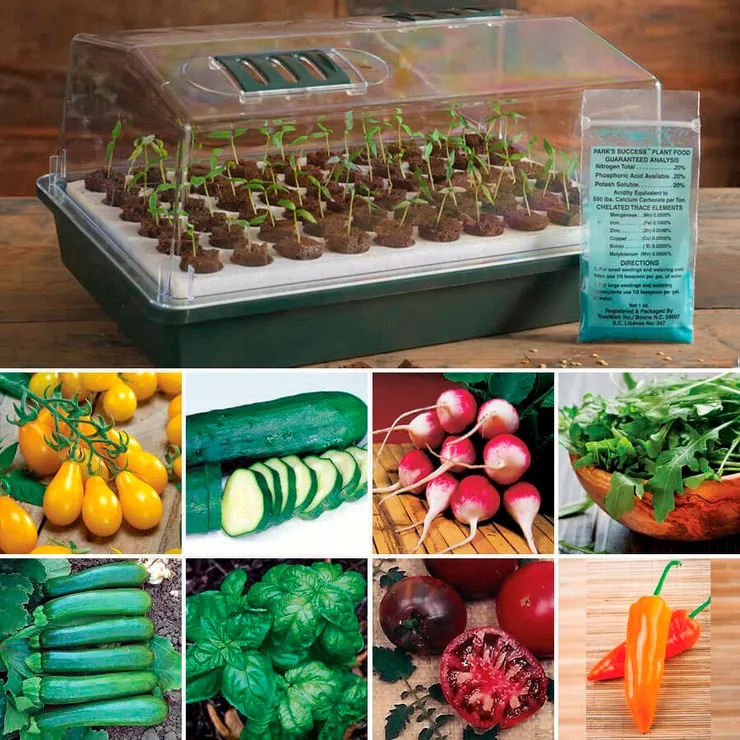How To Direct Sow Seeds In The Garden: Grow No-Fuss Flowers And Vegetables
Direct seeding into garden soil is a rewarding way to start plants and satisfy the urge to grow. Learn how to give flowers, vegetables, and herbs the best start.

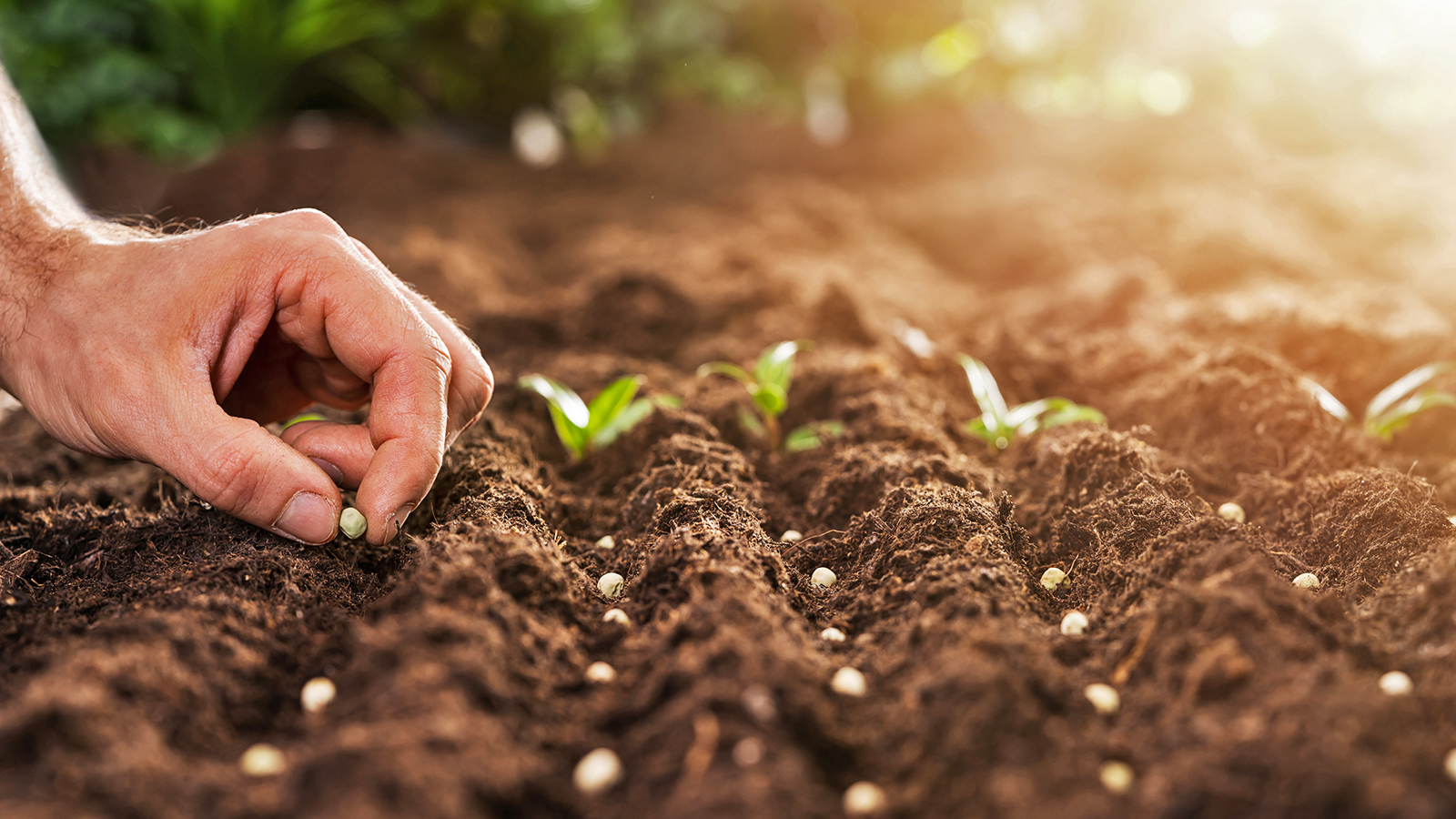
Direct seeding is an easy way to get your garden going without much fuss. If you direct sow seeds in their final growing positions, you won’t need to go to the trouble and expense of germinating them indoors. It can take a fair bit of effort to recreate seedlings' optimal growing conditions inside, often requiring the use of specialist equipment to get the best results. Plants then need to acclimate to the garden before being transplanted into their final positions.
Planting seeds into garden soil is closer to what Mother Nature intended and is an essential skill all gardeners must learn. As well as being lower-maintenance, direct sowing is the best option for plants that don’t do well with transplanting. This is particularly an issue for plants with long tap roots, like root vegetables, legumes, and certain flowers, such as lupines and poppies. Other flowers require a chilling period before germination, known as stratification, which can naturally be provided through planting outdoors at the right time,
Check the seed packet information for guidance on whether plants should ideally be started indoors or outdoors, and follow a few key planting rules to get the best out of direct seeding.
What Does Direct Sow Mean?
“Direct sowing” – or "direct seeding" – means exactly what it sounds like: planting seeds directly into garden beds. It's a quick and easy way to garden that avoids a lot of the inconveniences and expense of starting seeds indoors.
You won't need seed-starter pots, humidity domes, and seed-starting mix. The seedlings won't require constant care and watering, and you won't have to harden them off before transplanting them into the garden. In addition, seedling light requirements are high, meaning grow lights are often needed indoors to avoid leggy seedlings.
However, direct sowing is not completely hands-off. To increase your chances of success, the garden beds will have to be prepared to receive the seeds. This involves weed and rock removal, adding compost, and other steps to make the soil ready to sow. You will likely also need to protect the seedlings from pests and inclement weather.
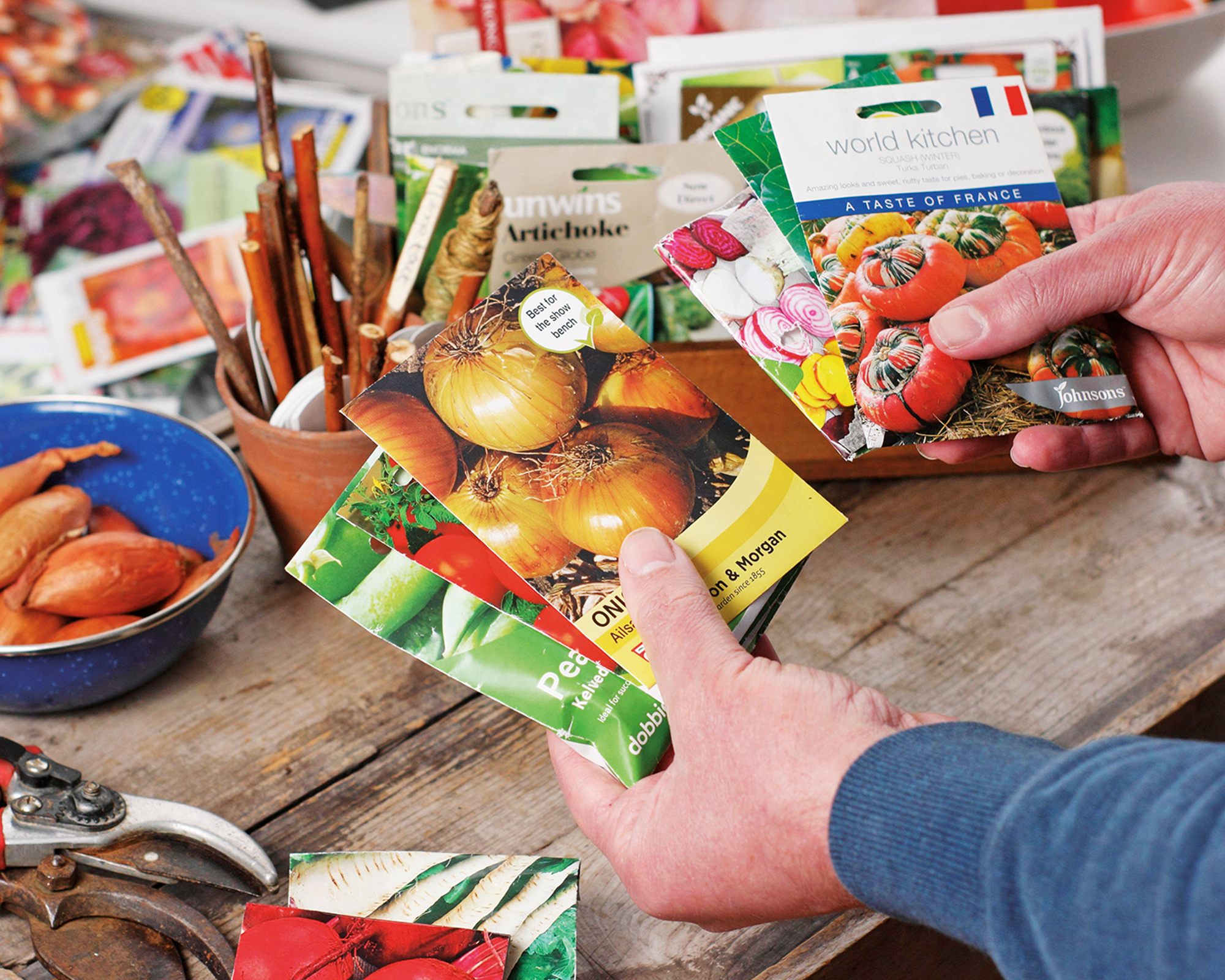
When to Direct Sow Seeds
Before honing your technique, you must understand that timing is everything. Knowing when to start planting seeds will make all the difference between a successful crop and a total flop. Temperature is a key factor for germinating seeds, and seed-starting times are dependent on your USDA hardiness zone and last frost date.
Sign up for the Gardening Know How newsletter today and receive a free copy of our e-book "How to Grow Delicious Tomatoes".
Direct sowing seeds is a fine solution for gardeners in warm climates, but if springs are cold in your region, you won’t be able to rely entirely on this approach. Starting seeds indoors six to eight weeks before your last predicted frost will extend the growing season for tender flowers and vegetables. Although winter sowing seeds outdoors is possible with many hardy varieties if a little protection is provided.
Soil temperature is a crucial factor for when to sow seeds outdoors. The optimal range varies from seed to seed, but for vegetables, between 60 and 70°F (15 and 21°C) is ideal. However, some flowers and cold-weather vegetables will germinate at cooler temperatures of 45 to 55°F (7 to 12°C). These early bird seeds can be direct sown outdoors once the soil is workable.
Preparing Garden Beds for Sowing
If you plan to direct sow flower seeds or vegetables, the first step is to plan and prepare the garden beds. If you are just getting your first garden going, find a relatively flat spot with good soil that gets 6 to 8 hours a day of full sun. Adequate sunlight is necessary to raise vegetables like tomatoes and corn, and it helps keep pests and diseases away from all types of vegetables.
Dig over your soil, removing any rocks, sticks, and weeds. You can use a shovel and spade or a rototiller to loosen the soil to a depth of at least 6 inches (15cm), but keep in mind that a rototiller can break down the soil more than is ideal for growing crops. After that, smooth out the soil surface with a rake, chopping up any soil clods that are left.
The best soil type for a garden is loam soil, but if you have clay soil or sandy soil, you can still make it work by adding organic compost. It improves water penetration in heavy soil and adds water-holding capacity in sandy soil. Any type of organic matter – including humus, compost, or well-rotted manure – will work well. Add enough so that the soil is about one-third organic matter.
Finally, water the garden well. You want the soil to be moist at the time you direct sow.

How to Direct Sow Seeds
Choose a good day to sow seeds outdoors in spring, taking into account the average last frost date. Seeds of tender vegetables and annual flowers should not be sown outside before this date.
Plan the garden space so that taller plants will not shade the lower specimens. Organize your seeds by size since the correct sowing technique is different for large and small seeds. This also affects how deep to plant seeds. Sow the bigger seeds by hand, pouring them from the seed packet into your hand and sprinkling them in place. For medium-sized seeds, tear a corner off the seed jacket, then tap it to disperse the seeds. Mix tiny seeds with fine sand before sprinkling them onto the prepared soil.
Labeling the different crops or flowers you plant is useful. It provides a map to the plants growing in your beds.
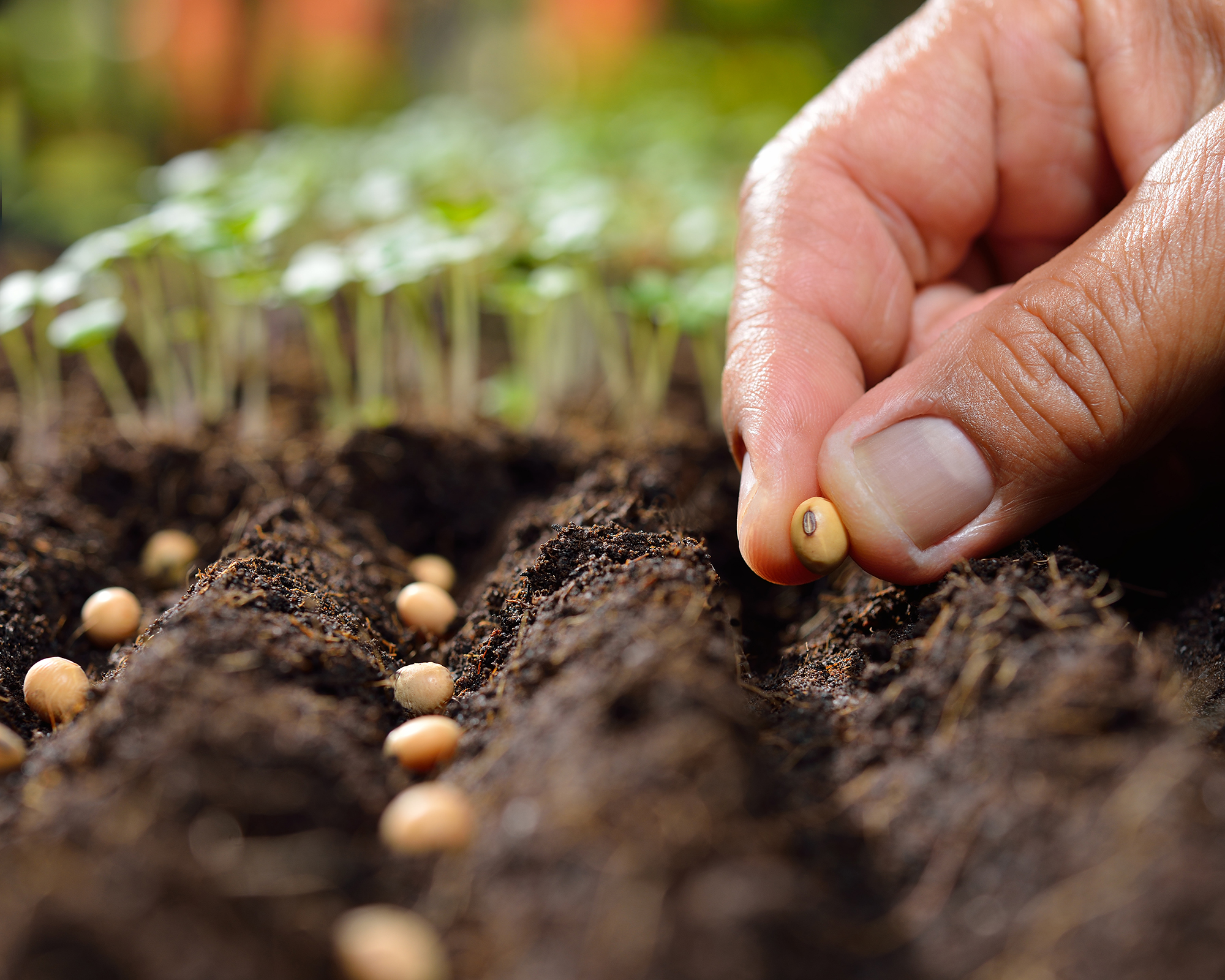
Caring for Direct Sown Seeds
The work is not done when you direct sow – in fact, it is just beginning. The most important task after direct seeding is to keep the soil moist during seed germination. Germination will vary by seed variety, but most will sprout within five days to two weeks. When watering seedlings, use a fine spray or mist on the hose on a daily basis, or two times on hot days. If your soil tends to crust over, cover the garden bed with floating row covers or misted newspapers.
Another important part of direct sowing is learning how to thin seedlings. Thinning reduces the density of plants, giving each one extra access to soil for developing a root system and uptaking nutrients and water. Wait until the plants are a few inches tall before thinning, then pluck out or cut out weaker seedlings.
Over time, you need to remove enough to leave the remaining plants spaced as recommended on the seed packet. Watering the soil before thinning makes it easier to pluck out the weaker plants, but you can also cut them off at ground level with scissors. Aborted seedlings of vegetables make great salad additions and shouldn’t be considered a waste.
Keep a careful watch out for weeds and deal with those little devils as they appear. New plants may need the protection of a collar to keep birds and cutworms from chomping off the tender bits. Some plants need to be pinched back when young to promote bushier forms.
Provided you amended the soil with plenty of organic matter, fertilizing seedlings is not necessary for many varieties. However, bigger yields and tastier veggies result from the application of compost tea, worm castings, or even side dressings of manure once the seedlings have a couple of sets of true leaves. Don’t fertilize seedlings initially, as they may burn.
Watch the plot carefully for signs of insects and combat these appropriately. In just a month or so, you could be eating and sharing the fruits of your victory.
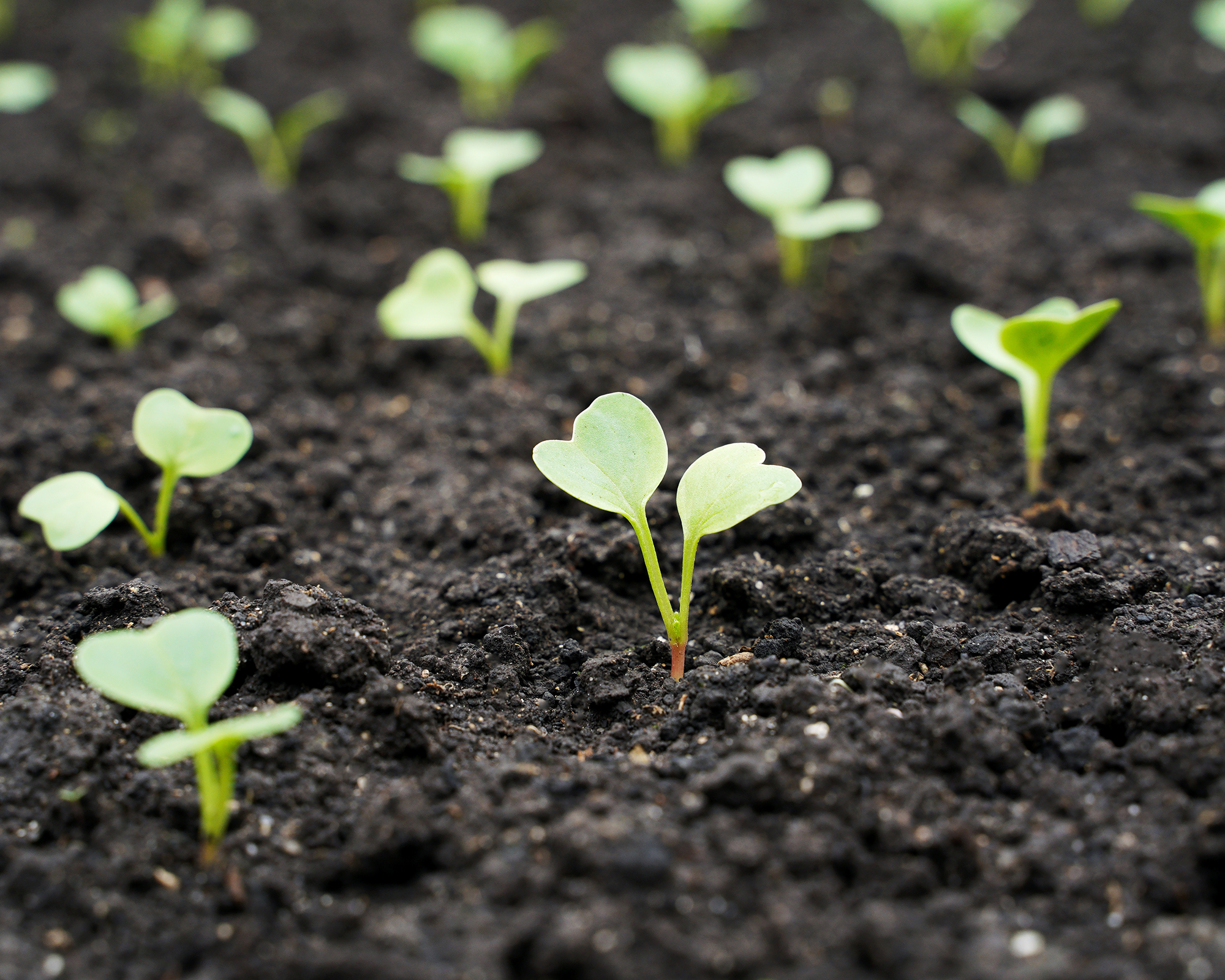
Direct Sowing vs Transplanting
Deciding whether to direct sow or start seeds indoors largely depends on the climate. Gardeners living in colder regions will not be able to rely exclusively on direct sowing since there will not be sufficient time after the last spring frost date for the plants to mature. That means that planting indoors and transplanting young seedlings is the only option for growing a wide variety of vegetables and annual flowers.
Most seeds take to indoor germination and transplanting, but some do not. Those that won’t transplant well include beans and peas, as well as root vegetables like carrots and beets. These should be sown directly as soon as the soil is warm enough.
Best Plants to Direct Sow
Once you determine that you live in a warm enough area to direct sow flowers, vegetables, and herbs in your garden, you’ll want to put together a list of what to plant.
The list of the best flower seeds to sow directly outside is long. It includes most annual flowers but some perennials too. You can browse a range of stunning flower seeds in the Gardening Know How Shop, including expert-curated collections. Flower favorites to try direct sowing include:
- Alliums
- Batchelor buttons
- Cosmos
- Dianthus
- Lupines
- Morning glories
- Nasturtiums
- Penstemon
- Poppies
- Primroses
- Silene
- Sunflowers
- Sweet peas
What about direct sow vegetables? Really, you should only plant veggies that you and your family like to eat. You can find the most delicious vegetable seed varieties in the Shop. Here are some good vegetable choices for direct sowing:
Growing herbs from seed is a wonderful way to enhance the flavor of cooking, while many varieties support pollinators and make excellent companion plants for vegetables. Visit the Shop for the finest-quality herb seeds you can grow. These are among the best herbs to direct sow:
More Growing Inspiration
- Why are my seedlings wilting? Learn 6 common causes, how to diagnose the problem – and how to revive them before it's too late.
- Browse the finest flower, vegetable, and herb seeds in the Gardening Know How Shop – all selected for performance, beauty, and flavor.
- Try these raised bed garden layout ideas to maximize your vegetable harvest.
- Discover the best annual flowers to start in spring: sow these 8 brilliant bloomers for your best-ever garden.
- Sign up to the Gardening Know How Newsletter for a regular dose of growing advice and inspiration straight to your inbox.
This article features products available from third party vendors on the Gardening Know How Shop.

Teo Spengler is a master gardener and a docent at the San Francisco Botanical Garden, where she hosts public tours. She has studied horticulture and written about nature, trees, plants, and gardening for more than two decades, following a career as an attorney and legal writer. Her extended family includes some 30 houseplants and hundreds of outdoor plants, including 250 trees, which are her main passion. Spengler currently splits her life between San Francisco and the French Basque Country, though she was raised in Alaska, giving her experience of gardening in a range of climates.
- Bonnie L. GrantWriter
- Melanie GriffithsEditor in Chief
